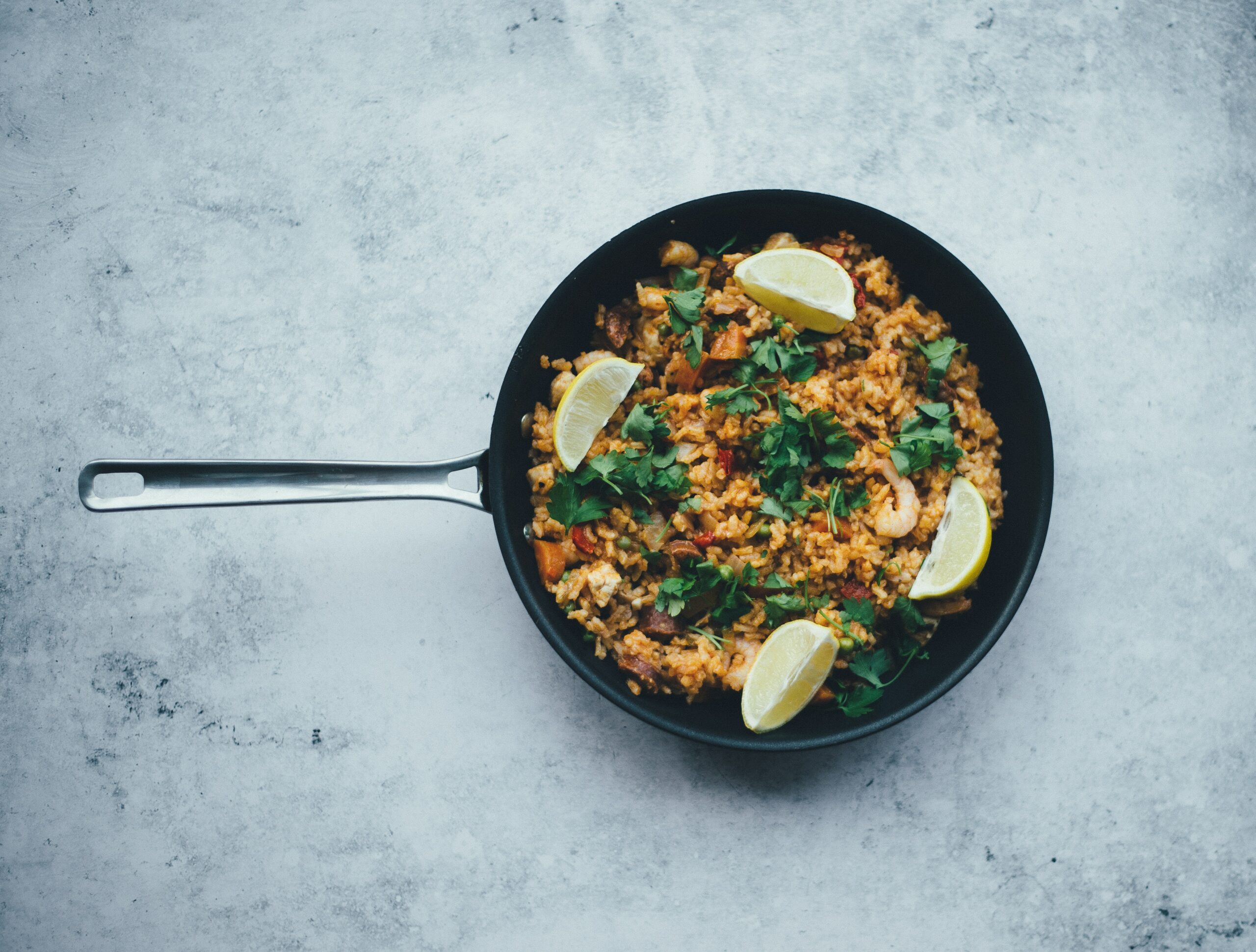The ideal pan for you will depend on your cooking requirements and preferences, as well as the kinds of meals you enjoy making. Here are some things to take into account when choosing a pan, such as the materials, shape, and size:
Materials:
Stainless Steel:
Pans made of stainless steel are hardy, unreactive, and stain-resistant. They work well for frying, deglazing, and sauce preparation. For even heating, look for pans with a copper or aluminum core.
Non-Stick:
Non-stick pans have a coating (typically made of ceramic or PTFE) that makes them simple to clean and perfect for cooking with little to no fat. They are excellent for delicate foods like eggs and pancakes. When the coating deteriorates, they might need to be handled more gently and replaced on a regular basis.
Cast Iron:
The excellent heat retention and even heating of cast iron pans are well known. They are adaptable and can be used in an oven or a stovetop. They need the right seasoning and upkeep but are excellent for searing, frying, and baking.
Carbon Steel:
Carbon steel pans provide good heat distribution and retention similar to cast iron. They are suitable for processes like stir-frying and searing because they are lighter and more responsive to temperature changes.
Copper:
Copper pans provide quick, accurate heating. To avoid reactions with acidic foods, they are frequently lined with stainless steel. Although they can be pricey, copper pans are excellent for delicate sauces.
Shape:
Skillet/Frying Pan:
A round or oval pan with a flat bottom and shallow, sloping sides. It works well for frying, searing, and sautéing.
Saucepan:
A large, straight-sided pan with a lid and a deep bottom. Ideal for making sauces, soups, and boiling liquids.
Sauté Pan:
With straighter sides and a bigger surface area than a skillet, but similar. Suitable for activities like stirring stir-fries and browning meat.
Stockpot:
A tall, deep pot with two handles and a lid that is great for making lots of soup, stew, and stocks.
Dutch Oven:
A large, heavy pot with a lid that is typically made of cast iron or cast iron with enamel. Excellent for braising, baking, and slow cooking.
Grill Pan:
A skillet with ridges raised to resemble grill marks. Excellent for adding char marks to food while grilling inside.
Size:
You should match the size of the pan you select to your cooking requirements and the number of people you usually cook for. Here are some recommendations:
For the majority of cooking tasks, a 10- to 12-inch skillet is a versatile size.
To accommodate various recipes, consider having a range of saucepan sizes, such as 1-quart, 2-quart, and 4-quart.
Different sizes of stockpots and Dutch ovens are available, but a 6- to 8-quart pot is typically sufficient for most recipes.
Grill pans ought to be big enough to accommodate the foods you intend to grill, like steaks or vegetables.
Remember that having a range of pans in your kitchen can be useful for various cooking methods and dishes. If you intend to finish dishes in the oven, it is also crucial to think about how your cookware will work with the type of stove you have (gas, electric, or induction). Additionally, spending money on high-quality cookware can lead to better durability and long-term performance.
The photo is from unsplash.com



